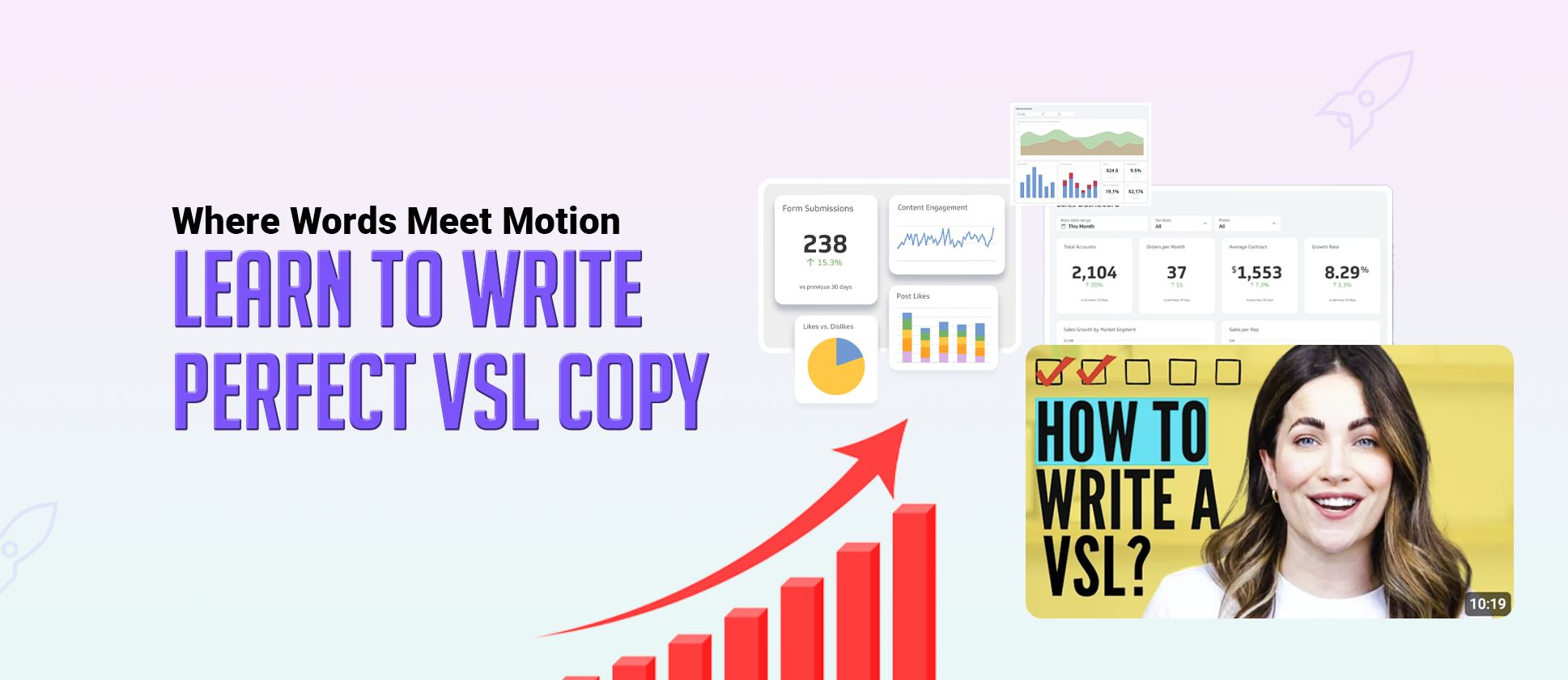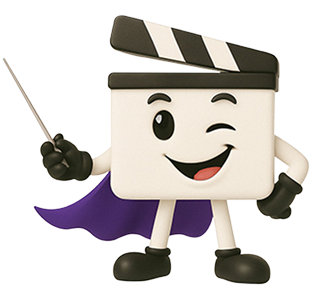Quick Summary
TL;DR: Writing perfect VSL copy is about connecting emotionally, telling a story, and guiding viewers toward one clear action. From a strong hook to benefits, proof, risk reversal, and a compelling CTA, every element must work together to engage, persuade, and convert. #tldr
- Key Tools & Templates:
Google Docs → Scrivener → Trello/Notion → Canva → Milanote → ShortVids Script Framework → ChatGPT → Jasper → Copy.ai
- VSL Duration & Format:
Low-ticket offers: 1–2 minutes → Mid-range: 3–7 minutes → High-ticket: 8–12 minutes → Keep pacing tight → visuals dynamic → script focused on outcomes
- Common Mistakes:
Weak opening, focusing on features over benefits, unclear CTA, and ignoring mobile or captions. Fix with clear hooks, benefit-driven visuals, and action-oriented CTAs.
- Final Takeaway:
A perfect VSL balances storytelling, visuals, and persuasive copy. Test scripts, optimize pacing, and pair with clear CTAs to maximize conversions. ShortVids can support scripting, editing, and producing VSLs that drive real results.
Writing a video sales letter, or VSL, is one of the most effective ways to sell through storytelling. Unlike a regular sales page, a VSL lets you connect with your audience through voice, visuals, and emotion all at once. If you’ve ever wondered how to write perfect VSL copy that actually converts, this guide will walk you through it step by step. You’ll learn how to structure your script, what mistakes to avoid, and how to make every second of your video count.
A strong VSL can do the heavy lifting for you, whether you’re promoting a course, a SaaS product, or a digital offer. Think of this as your blueprint for writing copy that keeps viewers watching and ready to take action. If you haven’t already, you might want to check out our AI in Marketing blog to see how storytelling and smart automation are changing how brands communicate.
Video remains one of the most powerful marketing tools today, converting up to 80% better than text-based content according to a report by Wyzowl. That’s why learning to write perfect VSL copy is a creative skill and a smart business move.
What Is a VSL and Why It Requires Perfect Copy
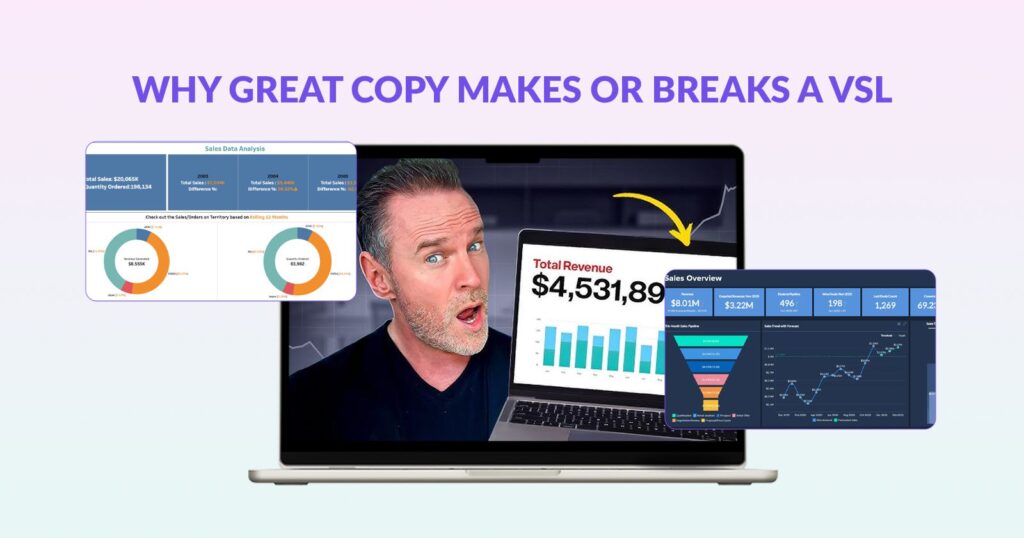
A Video Sales Letter (VSL) is a video that aims to sell a product or service. It engages viewers by telling a story and connecting with them emotionally while delivering a clear message. It changes the traditional written sales letter into a more personal and engaging visual experience. Instead of reading, viewers listen and watch, which often leads to a quicker emotional response.
The key difference between a VSL and a written sales letter is how the message is delivered. Readers can skim, skip, or reread a written page. But a video does not allow this. If viewers lose interest or get distracted, they may leave and not come back. That’s why writing perfect VSL copy matters so much – it needs to capture attention from the very first second and hold it through to the call to action.
Every word in your script plays a role in keeping viewers hooked. The tone, pacing, and structure of your copy must feel conversational and intentional. Unlike static text, your words will be spoken out loud, so clarity and flow are everything.
If you’re new to writing high-impact marketing scripts, you need some functional hacks to scale your video marketing strategy, which drive conversions.
VSL vs. Written Sales Letter – Key Differences
| Aspect | Video Sales Letter (VSL) | Written Sales Letter |
|---|---|---|
| Format | Video with visuals, voice, and emotion | Text-based with visuals or images |
| Engagement Style | Viewers watch and listen | Readers skim and scroll |
| Control Over Flow | Creator controls pacing | Reader controls pacing |
| Attention Span | Must hook early to avoid drop-off | Can re-engage with subheadings |
| Emotional Impact | Stronger through tone, visuals, and voice | Relies on word choice and structure |
| Conversion Potential | Often higher due to visual storytelling | Depends on reader engagement |
In short, a VSL blends copywriting with performance. It’s not just about what you say, but how you say it, and that’s what separates an average video from one that converts viewers into customers.
Core Elements of Perfect VSL Copy
The best VSLs sell, and they tell a story that leads to a conversion. Every word, visual cue, and transition in a video sales letter has a purpose: to move the viewer from curiosity to conviction. To write perfect VSL copy, you need to understand the emotional journey your audience takes while watching. The copy needs to sync with the pacing, visuals, and voiceover so it feels seamless instead of scripted.
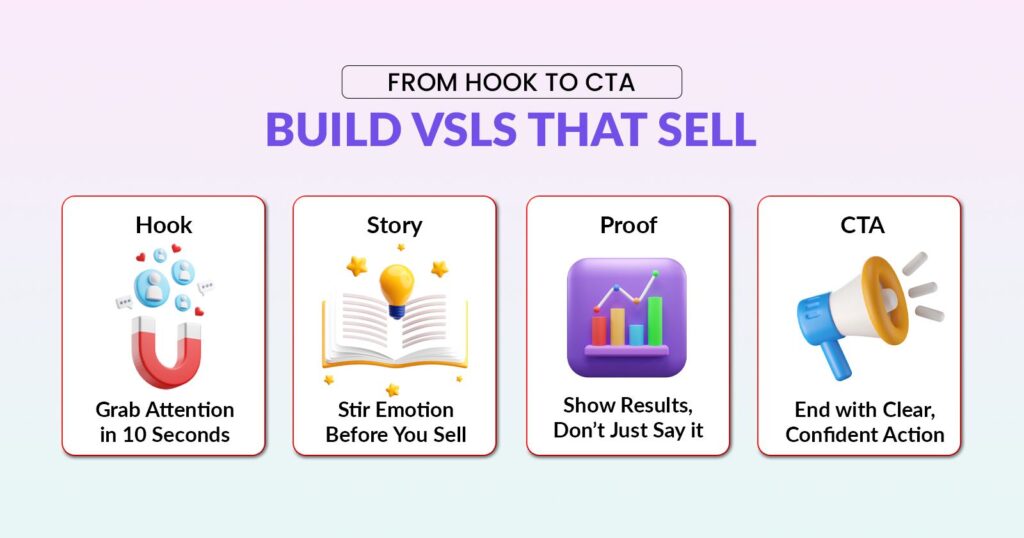
If you’ve read our post on video storytelling and how to use it, you’ll know that story arcs play a massive role in keeping attention and building trust. The same principle applies here: every section of your VSL should build emotional momentum while answering a silent question in the viewer’s mind – “Why should I care?”
Below are the three most critical parts of your VSL copy that make or break engagement and conversions.
Hook & Opening
The first 10 seconds of your VSL decide whether viewers stay or scroll away. A strong hook instantly connects with their pain point or desire. It could be a bold statement, a surprising fact, or a question that hits home.
Here are a few examples of effective VSL openings.
- You’re losing 80% of potential customers, and you don’t even know it yet.
- If your ads aren’t converting, it’s not your product. It’s your story.
- What if I told you your next 10 clients are already watching you right now?
Use conversational language and address your audience as “you” to create a friendly tone. Introduce the problem, but wait to share the solution, building curiosity and emotional connections first.
Presenting the Problem & Agitation
Once you’ve captured attention, it’s time to pick the pain point. Every great VSL magnifies the problem just enough for the viewer to feel it. This step is about empathy, showing you understand their frustration better than anyone else.
Use storytelling here. Describe a relatable scenario that mirrors their struggle, for example. “You’ve spent weeks crafting the perfect offer, but when you hit ‘publish,’ no one clicks. You refresh your dashboard… still zero sales.”
Agitating the problem doesn’t mean being negative; it means amplifying emotion. You want the viewer to recognize themselves in the story and feel compelled to keep watching for the solution.
Common Mistakes in this Section
- Jumping to the solution too quickly
- Overloading the viewer with technical details
- Sounding too scripted or exaggerated
- Focusing on features instead of feelings
- Ignoring empathy and tone
Introducing the Solution
When viewers understand the problem, it’s time to introduce your offer as the next step. This change should feel like a relief, not a sales pitch. To write a perfect video sales letter (VSL) copy, present your product or service as the solution that helps people move from frustration to transformation.
Start with empathy.
“That’s exactly why we created (your product/service name) to help you (solve specific pain point) without (common struggle).”
This line connects emotionally while framing your offer as the logical solution.
Next, highlight your unique value proposition (UVP), what sets you apart and makes your offer irresistible. If you need a refresher on shaping your UVP clearly, our guide on video content trends explains the types you need to know and how to use them.
Keep the focus on outcomes. Instead of saying “We offer video editing services,” say “We help creators turn unedited clips into polished content that gets noticed and converts.” Viewers connect more with what they get than what you do.
Benefits, Proof & Social Proof
Once you’ve introduced the solution, you need to prove it works. This is where you move from promise to credibility. The goal here is to turn belief into trust.
In video form, the difference between features and benefits is even more crucial because the viewer feels the impact visually. Features tell; benefits show. For example, “24-hour turnaround” is a feature, but “never miss your next upload” is a benefit that emotionally connects.
Bring your proof to life using.
- Testimonials that speak directly to results
- Before-and-after visuals showing real transformations
- Case studies that walk through the journey
- On-screen stats or reviews to reinforce credibility
A simple way to keep this clear in your VSL script is to map out how each feature translates into an on-screen benefit.
| Feature | Benefit | How It’s Shown in Video |
|---|---|---|
| 24-hour video turnaround | Stay consistent without burnout | Quick-cut visual of uploads happening on time |
| Dedicated content team | You focus on ideas, we handle the rest | Behind-the-scenes shots of editing and collaboration |
| Custom brand styles | Your videos stand out with a consistent look | Before/after branding shots or logo animations |
| Advanced analytics dashboard | See what’s working instantly | Screen recording of a real-time analytics graph |
Incorporate these visuals strategically throughout your script to maintain rhythm and trust.
Overcoming Objections & Risk Reversal
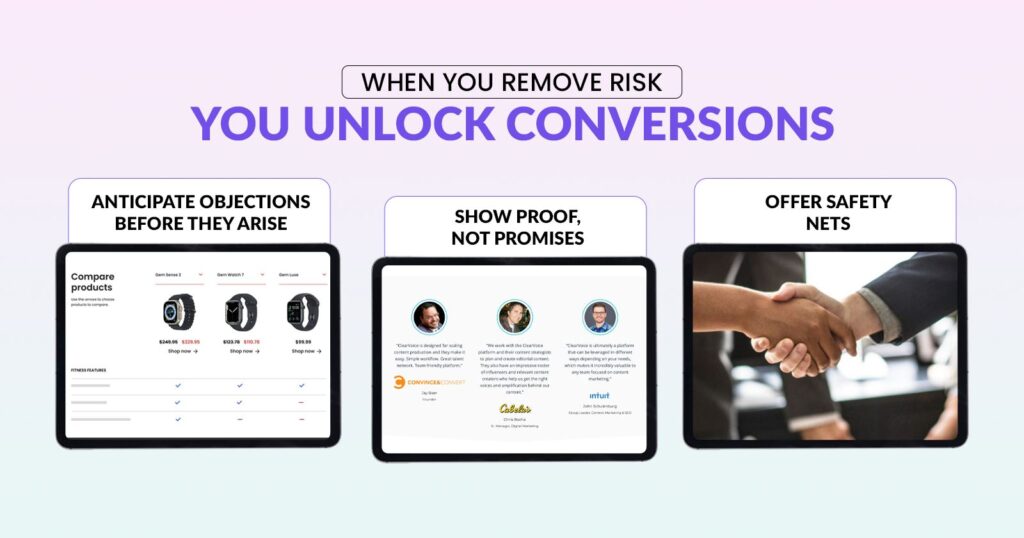
Even with strong storytelling and proof, your viewers might still hesitate. Maybe they’re unsure about cost, time, or whether your offer actually works. Great VSL copy doesn’t ignore these doubts, but it anticipates them. To write perfect VSL copy, you need to address every “yeah, but…” that might stop someone from acting.
Common Objections in Writing Perfect VSL Copy
- “It’s too expensive.” Compare cost vs. value. Show how your solution saves time, effort, or money in the long run.
- “It sounds complicated.” Use simple visuals to show ease of use. A 5-second demo clip often speaks louder than words.
- “I’ve tried something similar before.” Highlight what makes your solution different – whether it’s your process, results, or credibility.
Visual storytelling helps here, too. On-screen text like “No tech skills needed” or quick demo shots showing simple steps reinforces confidence.
A strong risk reversal makes people feel safe saying yes. Consider adding these
- A money-back guarantee, such as “Try it for 14 days – love it or get a full refund.”
- Limited-time bonuses, like an extra template pack or free consultation.
- Urgency lines that feel natural, not pushy – for example, “Only three spots left for this month’s onboarding.”
These strategies remove hesitation and help your audience see your offer as a risk-free, high-value opportunity.
Clear Call to Action (CTA)
Your VSL’s success depends on one thing – what the viewer does next. A clear Call to Action guides them exactly where to go, what to click, and what they’ll get.
Don’t wait until the end of your VSL to include a CTA. Add soft prompts early, around 25% and 75% of the way in, then finish with a strong, confident close. Each one should match your tone and purpose: helpful, not forceful.
Examples of effective CTAs
- “Click below to start your free trial today.”
- “Join hundreds of creators scaling their content – book your slot now.”
- “Tap the link and see how fast your videos can turn into conversions.”
You can pair verbal CTAs with visual cues, arrows, buttons, or even a subtle motion effect, drawing the eye to the action area.
CTA Checklist
- Use action-driven words (start, join, discover, unlock)
- Make the benefit clear (“start growing,” “get instant access”)
- Include both spoken and on-screen cues
- Keep visuals consistent with your brand
- Repeat the CTA at least three times across the VSL
When your CTA feels natural and rewarding, it closes a sale and continues a story your viewer wants to be part of.
Checklist – Write Your VSL Copy Like a Pro
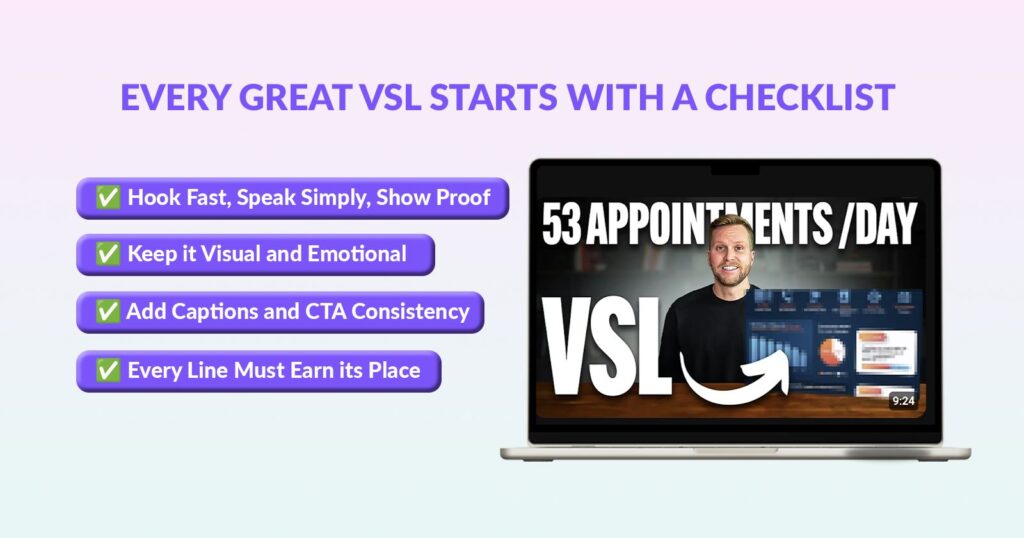
Here’s your essential checklist for writing effective Video Sales Letter (VSL) copy. Use this list as your guide to keep your message clear and persuasive. Start with the most important information, and make sure your structure flows logically from beginning to end. This quick reference will help you create VSLs that convert consistently, whether you’re writing for YouTube, an ad campaign, or a landing page.
VSL Copywriting Checklist
| Item | Check | Notes |
|---|---|---|
| Hook & Opening | ☐ | Capture attention in the first 10 seconds with a bold statement, question, or relatable scenario. Use “you” language. |
| Problem & Agitation | ☐ | Identify the audience’s pain point. Show empathy, use storytelling, and build tension without exaggeration. |
| Solution Introduction | ☐ | Present your product or service naturally as the answer. Keep your unique value proposition (UVP) clear and memorable. |
| Benefits & Proof | ☐ | Focus on transformation, not just features. Use visuals, testimonials, and real results to support your claims. |
| Overcoming Objections | ☐ | Address cost, time, and trust concerns early. Include guarantees, bonuses, or real-life proof to reduce friction. |
| Clear Call to Action (CTA) | ☐ | Repeat your CTA multiple times throughout the video. Use clear, action-driven language and visual cues. |
| Formatting & Structure | ☐ | Keep sentences short and conversational. Break long scripts into scenes with emotional flow. Avoid cluttered visuals. |
| Timing & Flow | ☐ | Every line should move the viewer forward. Keep the total script length aligned with attention span (2–4 minutes for short VSLs). |
| SEO & Accessibility | ☐ | Add captions and subtitles for reach. Include your focus keyword in the video title and description for better discoverability. |
Follow this checklist to make your VSL sound professional, feel personal, and persuade viewers. Each section helps keep viewers engaged all the way to the final click.
How Long Should Your VSL Be and Other Format Considerations
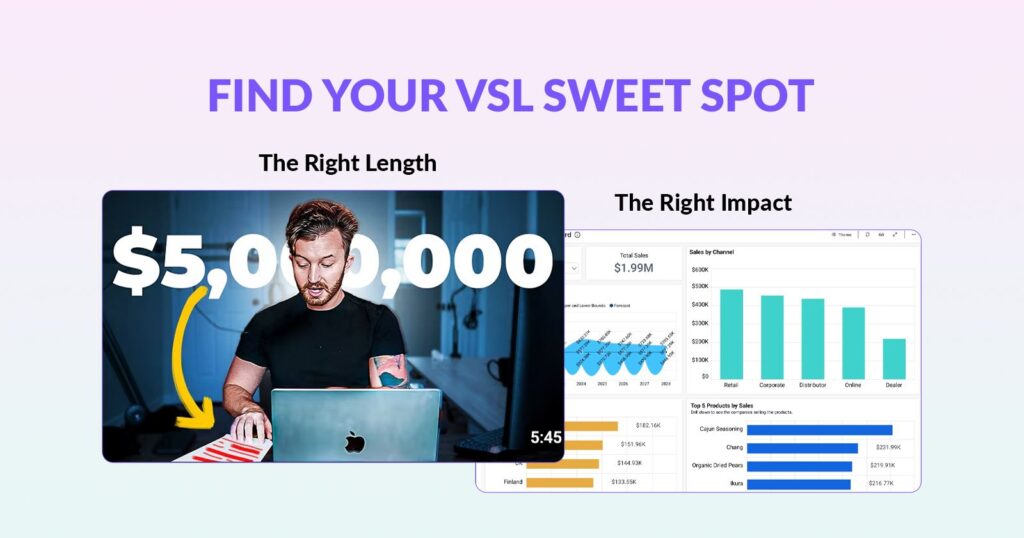
When it comes to writing the perfect VSL copy, one of the biggest questions is how long your video should be. There’s no single rule, because the ideal duration depends on your product’s price, your audience’s awareness level, and how complex your offer is. The goal is to keep viewers emotionally engaged from start to finish – not to rush, and not to drag on.
For example, a short 60-second VSL might be perfect for a low-cost digital product, while a 10-minute version might work better for a high-ticket course or service. What matters most is pacing. Each second should serve a purpose: building curiosity, creating connection, or driving action.
Here’s a simple guide to help you plan your VSL length.
| Product Type | Audience Awareness Level | Recommended Duration |
|---|---|---|
| Low-ticket offers (under $100) | Highly aware | 1 to 2 minutes |
| Mid-range products ($100 to $1,000) | Problem-aware or solution-aware | 3 to 7 minutes |
| High-ticket offers ($1,000+) | Unaware or complex solutions | 8 to 12 minutes |
| SaaS or subscription-based services | Solution-aware | 2 to 5 minutes |
| Coaching or consulting offers | Problem-aware | 5 to 10 minutes |
Your script pacing should match this flow. Start strong with a fast, emotional hook. Then slow slightly as you explain the problem and your solution. End with a clear, confident CTA that feels natural rather than pushy.
Visually, mix between close-ups, text overlays, and product or lifestyle shots to maintain attention. According to Time, remember that the average viewer’s attention span online is around 8 seconds, so your first few moments matter more than anything else.
Keeping your pacing tight, visuals engaging, and message focused helps your audience stay with you long enough to convert.
Common Mistakes in VSL Copywriting and How to Avoid Them
Even the best products can fall flat if your VSL copy doesn’t connect. The truth is, many marketers make the same simple mistakes that cost them conversions – not because their ideas are bad, but because the delivery misses key emotional or structural cues. A great VSL script needs to grab attention fast, tell a story that feels personal, and guide viewers toward one clear action. Let’s look at the most common pitfalls and how you can easily avoid them.
Mistake 1 – Weak Hook or Slow Start
Most viewers decide within the first 10 seconds whether they’ll keep watching. A slow or unclear opening can kill momentum before your message begins.
Quick Fixes
- Open with a strong emotional question or bold claim.
- Address your audience directly using “you.”
- Use visuals that instantly match your core message or emotion.
- Cut long intros or logo animations, start with the problem instead.
Mistake 2 – Overloading with Features Instead of Benefits
A common mistake in VSL copywriting is to focus on the product’s features without explaining why they matter. People buy transformations, not technical details.
Quick Fixes
- For every feature, write one clear benefit (use the “so that” rule).
- Show the outcome visually – before vs. after scenes work great.
- Use simple, human language that explains impact, not just process.
- Include a testimonial that reflects the benefit, not just satisfaction.
Mistake 3 – No Clear CTA or Too Many Options
Some VSLs end without a strong next step, while others overwhelm viewers with several choices. Both confuse the viewer and reduce conversions.
Quick Fixes
- Repeat one CTA throughout the video, in both verbal and visual form
- Use action verbs: “Start your free trial,” “Book your call,” or “Get your video today”
- Place CTAs at multiple touchpoints, not just at the end
- Make the button, link, or instruction visually obvious
Mistake 4 – Ignoring Mobile Viewers or Caption Accessibility
More than half of video content today is watched on mobile – often without sound. If your VSL isn’t optimized for that experience, you’re losing potential customers.
Quick Fixes
- Always include captions or subtitles.
- Keep text large and easy to read on small screens.
- Use vertical or square video formats for social platforms.
- Test your video on different devices before publishing.
When you fix these small but crucial details, your VSLs instantly feel more polished and human. A few mindful tweaks in tone, pacing, and presentation can turn an average script into a high-performing sales video that builds trust and drives conversions.
Tools, Templates & Resources for Writing Perfect VSL Copy
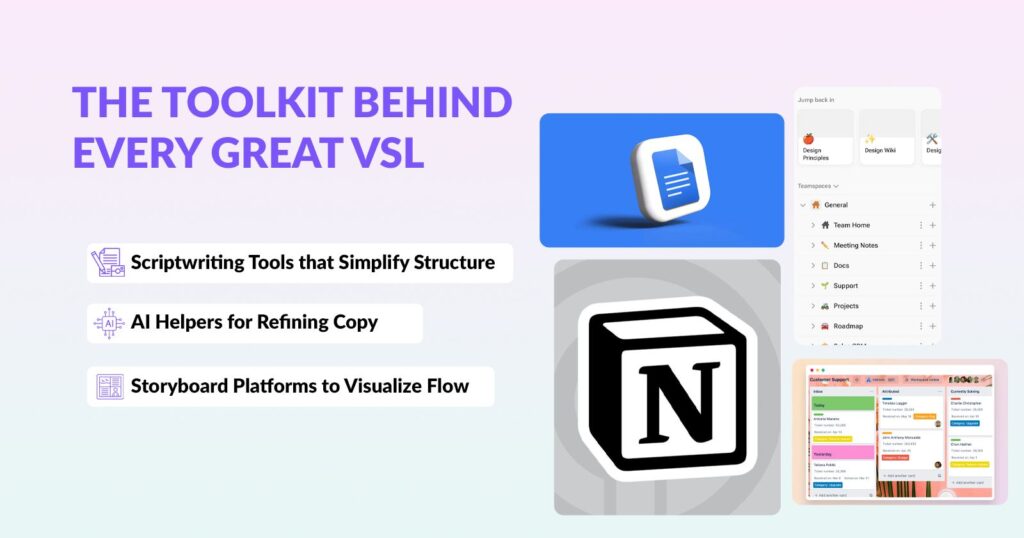
A great Video Sales Letter (VSL) requires more than just creativity; it also needs the right tools to help you organize and polish your ideas effectively. Whether you are writing a script from the beginning or improving an existing video, using the right software and frameworks can make the process easier and more strategic. Here are some of the most useful tools and resources to help you write perfect VSL copy with confidence.
Scriptwriting Tools
These platforms help structure your ideas, format your copy, and visualize how the message will sound on screen.
- Google Docs – Easy for collaboration and real-time feedback.
- Scrivener – Great for organizing longer scripts and storylines.
- Trello or Notion – Ideal for managing scenes, tasks, and creative feedback loops.
- ShortVids Script Framework (recommended) – A simple structure for creators writing conversion-focused video scripts.
AI-Assisted Copy Tools
If you need a starting point or want to improve flow and tone, these tools can help you brainstorm faster.
- ChatGPT – For drafting ideas, refining hooks, or testing different tones.
- Jasper – Offers templates for video ads and sales scripts.
- Copy.ai – Helps create CTA lines, product descriptions, and benefit-focused phrases.
For guidance on how AI tools fit into video production and storytelling, see our AI Video Editing Tools blog.
Storyboard and Visualization Tools
Once your copy is ready, visual planning helps align script sections with the appropriate shots or animations to create a perfect VSL.
- Canva Storyboard Maker – Simple drag-and-drop layouts for visual planning.
- Boards – Specifically built for video storyboarding and client feedback.
- Milanote – Great for creative teams organizing visuals, voiceovers, and scene flow.
Downloadable Template
Want a quick start? Create your own “VSL Script Template” with these sections.
- Hook & Opening Line
- Problem & Story Setup
- Solution & Product Reveal
- Benefits & Proof
- Objections & Risk Reversal
- CTA (with variations for testing)
This simple framework helps you stay organized and focused when writing your next VSL.
Final Thoughts
A perfect VSL copy is essential for increasing brand engagement. By using storytelling and a clear structure, a strong VSL captures attention and prompts action.
Explore how ShortVids can help you script, edit, and produce impactful VSLs that drive results.
FAQs About Perfect VSL Copy
It depends on your product and audience. For low-ticket offers, 2 to 5 minutes is often enough. High-ticket or more complex products may need 10 to 20 minutes to properly explain value and build trust. The key is to keep viewers engaged, not just watching.
Focus on emotions before logic. Use storytelling, a friendly tone, and visuals that support your message. Make sure your pacing is quick and your offer is clear. Regularly test your script and visuals to see what works best for your audience.
Yes, but it needs adaptation. Written sales letters rely on reading pace and formatting, while VSLs depend on rhythm, tone, and visuals. Simplify long sentences, add conversational transitions, and use visuals to highlight key points.
If you understand your audience well, you can draft your own VSL script using a checklist. But if you want polished conversion-focused copy, working with a VSL copywriter or video agency can help you save time and get better results.
Start testing once your first version gets at least 500 to 1,000 views. Change one variable at a time, headline, CTA, or thumbnail, so you know what’s driving results. Continuous A/B testing keeps your message fresh and effective.
Yes, absolutely. Over 80% of social video views happen with sound off, especially on mobile. Subtitles make your VSL accessible, SEO-friendly, and more engaging for all audiences.
Book a Call Today
- Fixed monthly plans starting at $999
- 24-hour turnaround time (or less) on all short-form edits
- 3-layer quality check system on every video
- No more chasing freelancers or managing editors
- Scale up to 50+ videos/month without hiring in-house
- Content team trained on platform trends, scroll-stopping hooks & storytelling
- Fully managed by professionals – you just upload & approve
- Response time: Under 1 hour (US & GCC time zones)
Cut your production costs, not your standards.

